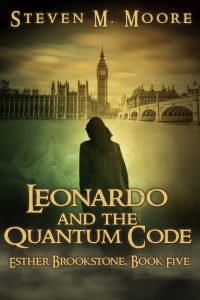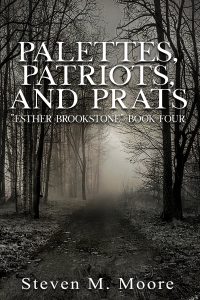Coding and quantum computers…
Alan Turing (1912-1954) was a famous British mathematician known for creating the “Turing machine” concept and using it to prove the “halting problem” for these machines was undecidable, the Gödel’s theorem of computer science. Because of a fairly recent movie, he justifiably is now considered a national and world hero for breaking the Enigma code by extending the deciphering capabilities of the “Polish bombe,” a mechanical technique used against the Nazi U-boats’ damaging offense launched against freighters crossing the Atlantic during World War II. Like Oscar Wilde and many others, he was treated terribly by the British, basically forced to commit suicide. (The Brits didn’t decriminalize homosexuality until 2008 when what is now known as “Turing’s law” was passed.)

Ever since Turing, and maybe even before, coding has always been good employment for mathematicians or other people with mathematical skills. Of course, here I mean coding to be encryption and decryption of messages, not designing iPhone and Android apps! The goal is always to create unbreakable codes, and these techniques are used by many people, not just spies and the military. There are simple codes your kids can use (for parents reading this post, I’ve taken pity on you and won’t mention specifics), and more complex ones that need large primes. Most of the latter could be broken by a quantum computers.
Turing is also considered the father of artificial intelligence (the machine algorithm that bears his name is considered a test for that). Sci-fi stories seem to care more about AI systems, especially those used to guide starships and give robots more human characteristics. (Asimov, however, was too early to consider either one!) Few authors care about quantum encryption/decryption, and “quantum computers” have almost become a cliche like “FTL drives,” with few worrying about the nuts and bolts involved.

Consequently, the real purpose of this post is to emphasized that my new Esther Brookstone novel, Leonardo and the Quantum Code, is only partially about quantum encryption/decryption and certainly not sci-fi. It’s a mystery/thriller novel, like the pervious novels in the series, where coding algorithms are inspired by Da Vinci’s work in an unknown notebook of his. (It’s estimated that there are 50+ such novels.) An old mathematician friend of Esther’s, Donald Townes, is working on these algorithms, and someone wants to steal his results. There’s a trio of villains, in fact: Russian spies, American spies, and a strange man named Vladimir Kalinin, a Russian ex-pat.
Turing is briefly mentioned in the book; he’s also mentioned in Death on the Danube for his gayness and the Brits’ crime. He’s a tragic character, but Townes is too, for his wife has just been murdered. He begins to turn his life around by the end of the book, though, unlike Turing. While I wanted to show scientists are human beings and can exhibit the whole spectrum of human behavior, I rewrote the novel so that he doesn’t suffer as much as Turing.
In fact, the novel is a bit light-hearted at times, in keeping with the title. Saucy Esther, of course, helps keep it from taking itself too seriously, unlike Palettes, Patriots, and Prats, which is mostly serious. The theme of cyber security, is deadly serious, which is enough.
I’ve tried to strike a good balance between Moliere and Le Carre. The coppers aren’t quite “Keystone Cops”; and the spy-vs-spy antics aren’t as tongue-in-cheek as Mad Magazine’s or as noir as Le Carre’s Little Drummer Girl. The mystery-novel aspects aren’t as fluffy as a cozy’s or serious as a psychological thriller either.
I’m proud of this novel. It just might be my best so far. Above all, I think I managed to write another entertaining and educational book in the series. You’ll have to read it to see if you agree.
***

Comments are always welcome.
“Esther Brookstone Art Detective.” Esther takes you around merry olde England, Europe, the Middle East, and South America in her five-book series. Esther’s main characteristic is becoming obsessed with righting wrongs, from searching for a missing Rembrandt in the first book to risking her life to help a friend in the last. And this saucy ex-MI6 spy and ex-Scotland Yard inspector acts on those obsessions! Her novels can be found wherever quality ebooks are sold. (The last two are not on Amazon, though.)
Around the world and to the stars! In libris libertas!
